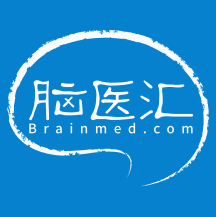International Journal of Stroke
本篇文献由机器智能翻译
Identifying the optimal time period for detection of atrial fibrillation after ischaemic stroke and TIA: An updated systematic review and meta-analysis of randomized control trials
确定缺血性卒中和短暂性脑缺血发作后检测心房颤动的最佳时间:随机对照试验的最新系统回顾和荟萃分析
Atrial fibrillation (AF) is a major risk factor for ischaemic stroke (IS) and transient ischaemic attack (TIA). The timely detection of first-diagnosed or "new" AF (nAF) would prompt a switch from antiplatelets to anticoagulation to reduce the risk of stroke recurrence; however, the optimal timing and duration of rhythm monitoring to detect nAF remains unclear. We searched MEDLINE, PubMed, Cochrane database, and Google Scholar to undertake a systematic review and meta-analysis of randomized controlled trials (RCT) between 2012 and 2023 investigating nAF detection after IS and TIA. Outcome measures were overall detection of nAF (control; (usual care) compared to intervention; (continuous cardiac monitoring >72 h)) and the time period in which nAF detection is highest (0-14 days, 15-90 days, 91-180 days, or 181-365 days). A random-effects model with generic inverse variance weights was used to pool the most adjusted effect measure from each trial. There is an almost fourfold increase in nAF detection with continuous cardiac monitoring, compared to usual care. The results also demonstrate two statistically significant time periods in nAF detection; at 0-14 days and 6-12 months following monitoring commencement. These data support the utilization of different monitoring methods to cover both time periods and a minimum of 1 year of monitoring to maximize nAF detection in patients after IS and TIA.
心房颤动(AF)是缺血性卒中(IS)和短暂性脑缺血发作(TIA)的主要危险因素。及时检测首次诊断的或“新的”房颤(NAF)将促使患者从抗血小板转为抗凝,以降低卒中复发的风险;然而,检测NAF的最佳节律监测时间和持续时间尚不清楚。我们检索了MEDLINE、PubMed、Cochrane数据库和Google Scholar,对2012至2023年间研究IS和TIA后NAF检测的随机对照试验(RCT)进行了系统回顾和荟萃分析。结果测量指标是NAF的总体检测(对照;(常规护理)与干预相比;(持续心脏监测>72小时)以及NAF检测最高的时间段(0-14天、15-90天、91-180天或181-365天)。使用具有通用逆方差权重的随机效应模型来汇集每个试验中调整最多的效应度量。与常规护理相比,持续心脏监测的NaF检测率几乎增加了四倍。结果还显示,在监测开始后的0-14天和6-12个月,NaF检测有两个统计上显著的时间段。这些数据支持使用不同的监测方法来覆盖时间段和至少一年的监测,以最大限度地检测IS和TIA后患者的NaF。
REF: Thakur M, Alsinbili A, Chattopadhyay R, Warburton EA, Khadjooi K, Induruwa I. Identifying the optimal time period for detection of atrial fibrillation after ischaemic stroke and TIA: An updated systematic review and meta-analysis of randomized control trials. Int J Stroke. Published online November 30, 2023. doi:10.1177/17474930231215277 PMID: 37947341
Prognostic value of recanalization attempts in endovascular therapy for M2 segment middle cerebral artery occlusions
再通尝试在大脑中动脉M2段闭塞血管内治疗中的预后价值
There is growing evidence suggesting efficacy of endovascular therapy for M2 occlusions of the middle cerebral artery. More than one recanalization attempt is often required to achieve successful reperfusion in M2 occlusions, associated with general concerns about the safety of multiple maneuvers in these medium vessel occlusions. The aim of this study was to investigate the association between the number of recanalization attempts and functional outcomes in M2 occlusions in comparison with large vessel occlusions (LVO). This study suggests a clinical benefit of successful reperfusion within three recanalization attempts in endovascular therapy for M2 occlusions, which was similar in LVO. Our findings reduce concerns about the risk-benefit ratio of multiple attempts in M2 medium vessel occlusions.
越来越多的证据表明血管内治疗对大脑中动脉M2闭塞的疗效。在M2闭塞中,往往需要不止一次的再通尝试才能成功地再通,这与对这些中等血管闭塞中多次操作的安全性的普遍担忧有关。本研究的目的是与大血管闭塞(LVO)比较,研究M2闭塞的再通尝试次数与功能结果之间的关系。这项研究表明,在M2闭塞的血管内治疗中,在三次再通尝试内成功再通的临床益处与左心室闭塞的情况类似。我们的发现减少了对M2中血管闭塞中多次尝试的风险-收益比的担忧。
REF: Winkelmeier L, Heitkamp C, Faizy TD, et al. Prognostic value of recanalization attempts in endovascular therapy for M2 segment middle cerebral artery occlusions. Int J Stroke. Published online November 22, 2023. doi:10.1177/17474930231214769 PMID: 37935652
Association of multimorbidity with mortality after stroke stratified by age, severity, etiology, and prior disability
按年龄、严重程度、病因和既往残疾分层的卒中后多发病与死亡率的关系
Multimorbidity is common in patients with stroke and is associated with increased medium- to long-term mortality, but its value for clinical decision-making and case-mix adjustment will depend on other factors, such as age, stroke severity, etiological subtype, prior disability, and vascular risk factors. In the absence of previous studies, we related multimorbidity to long-term post-stroke mortality with stratification by these factors. Pre-stroke multimorbidity is highly prevalent and is an independent predictor of death after stroke, supporting its inclusion in case-mix adjustment models and in informing decision-making by patients, families, and carers. Prediction in younger patients and after minor stroke, particularly for non-vascular death, suggests potential clinical utility in targeting interventions that require survival for 5-10 years to achieve a favorable risk/benefit ratio.
多发病在中风患者中很常见,并与中长期死亡率的增加有关,但其临床决策和病例组合调整的价值将取决于其他因素,如年龄、中风严重程度、病因亚型、既往残疾和血管危险因素。在缺乏先前研究的情况下,我们将多病与长期卒中后死亡率联系起来,并按这些因素进行分层。卒中前多发病非常普遍,是卒中后死亡的独立预测因子,支持将其纳入病例组合调整模型,并在患者、家属和照顾者的决策中提供信息。对年轻患者和轻微中风后的预测,特别是对非血管性死亡的预测,表明在针对需要存活5-10年以实现有利的风险/收益比的干预措施方面具有潜在的临床实用价值。
REF: Downer MB, Luengo-Fernandez R, Binney LE, et al. Association of multimorbidity with mortality after stroke stratified by age, severity, etiology, and prior disability. Int J Stroke. Published online November 22, 2023. doi:10.1177/17474930231210397 PMID: 37850450
Sleep disorders as both risk factors for, and a consequence of, stroke: A narrative review
睡眠障碍既是卒中的危险因素,也是卒中的后果:一项叙述性综述
Sleep disorders are increasingly implicated as risk factors for stroke, as well as a determinant of stroke outcome. They can also occur secondary to the stroke itself. In this review, we describe the variety of different sleep disorders associated with stroke and analyze their effect on stroke risk and outcome. Sleep disorders are risk factors for stroke and associated with worse stroke outcome. They are also a common consequence of stroke. Recent guidelines suggest screening for sleep disorders after stroke. It is possible that treatment of sleep disorders could both reduce stroke risk and improve stroke outcome, although further data from clinical trials are required.
睡眠障碍越来越多地被认为是中风的危险因素,也是中风结局的决定因素。它们也可以发生在中风本身之后。在这篇综述中,我们描述了与中风相关的各种不同的睡眠障碍,并分析了它们对中风风险和预后的影响。睡眠障碍是中风的危险因素,并与更糟糕的中风结局相关。它们也是中风的常见后果。最近的指南建议对中风后的睡眠障碍进行筛查。尽管还需要临床试验的进一步数据,但治疗睡眠障碍可能既能降低中风风险,又能改善中风结果。
REF: Mayer-Suess L, Ibrahim A, Moelgg K, et al. Sleep disorders as both risk factors for, and a consequence of, stroke: A narrative review. Int J Stroke. Published online November 20, 2023. doi:10.1177/17474930231212349 PMID: 37885093
Effect of abnormal body weight on mortality and functional recovery in adults after stroke: An umbrella review
体重异常对成人卒中后死亡率和功能恢复的影响:一项伞式综述
Several published systematic reviews have drawn conflicting conclusions on the effect of abnormal body weight (i.e. being underweight, overweight or obese) on outcomes following stroke. The 'obesity paradox' seen in several diseases (wherein obesity, often associated with mortality and morbidity, appears to be protective and improve outcomes) may be evident after stroke, but inconsistent results of existing reviews, and the issue of being underweight, are worth investigating further. To better understand the impact of body weight on prognosis after stroke, we aimed to answer the following research question: What is the effect of abnormal body weight (underweight, overweight, or obesity) on mortality and functional recovery in adults after stroke? Abnormal body weight effects post-stroke outcomes and should be considered in clinical decision-making, prognostic research, and clinical trials of rehabilitation interventions. The "obesity paradox" is evident after stroke, and excess body weight is associated with reduced mortality compared to normal body weight. It is recommended that body weight is routinely recorded for stroke patients, and further research, including well-designed cohort studies with reliable weight data, is needed to further investigate the impact of body weight and distribution on post-stroke outcomes.
几篇已发表的系统性综述对异常体重(即体重过轻、超重或肥胖)对中风后预后的影响得出了相互矛盾的结论。在几种疾病中发现的“肥胖悖论”(其中肥胖通常与死亡率和发病率相关,似乎具有保护和改善预后的作用)在中风后可能会很明显,但现有综述的不一致结果以及体重不足的问题值得进一步研究。为了更好地了解体重对卒中后预后的影响,我们旨在回答以下研究问题:体重异常(体重不足、超重或肥胖)对成人卒中后死亡率和功能恢复有何影响?体重异常会影响卒中后的预后,在临床决策、预后研究和康复干预的临床试验中应予以考虑。“肥胖悖论”在中风后很明显,与正常体重相比,超重与死亡率降低有关。建议对中风患者常规记录体重,还需要进一步的研究,包括设计良好的具有可靠体重数据的队列研究,以进一步调查体重和分布对中风后预后的影响。
REF: Holland SA, Wellwood I, Kuys S. Effect of abnormal body weight on mortality and functional recovery in adults after stroke: An umbrella review. Int J Stroke. Published online November 18, 2023. doi:10.1177/17474930231212972 PMID: 37897100
Endovascular treatment for acute ischemic stroke beyond the 24-h time window: Selection by target mismatch profile
超过24小时时间窗的急性缺血性卒中的血管内治疗:靶点错配率选择
Endovascular treatment for acute ischemic stroke patients with large vessel occlusion (LVO) has been established as a promising clinical intervention within a late time window of 6-24 h after symptom onset. Patients with slow progression, however, may still benefit from endovascular treatment beyond the 24-h time window (very late window). The aim of this study is to report insight into the potential clinical benefits of endovascular treatment for acute ischemic stroke beyond 24 h from symptom onset. Endovascular treatment can be performed safely and effectively in LVO patients beyond 24 h from symptom onset when selected by target mismatch profile. The clinical outcome of these patients was comparable to those treated in the 6- to 24-h window. Larger studies are needed to confirm these findings.
血管内治疗急性缺血性卒中合并大血管闭塞(LVO)已被确定为一种有前途的临床干预措施,在症状出现后6-24小时内是一种有前途的临床干预措施。然而,进展缓慢的患者仍有可能在超过24小时的时间窗口(非常晚的窗口)后从血管内治疗中受益。这项研究的目的是深入了解血管内治疗对发病超过24小时的急性缺血性中风的潜在临床益处。根据靶点错配情况选择发病24小时以上的LVO患者,可安全有效地进行血管内治疗。这些患者的临床结果与在6至24小时窗口内治疗的患者相似。需要更大规模的研究来证实这些发现。
REF: Nguyen TQ, Tran MH, Phung HN, et al. Endovascular treatment for acute ischemic stroke beyond the 24-h time window: Selection by target mismatch profile. Int J Stroke. Published online November 3, 2023. doi:10.1177/17474930231208817 PMID: 37807200












